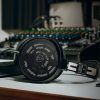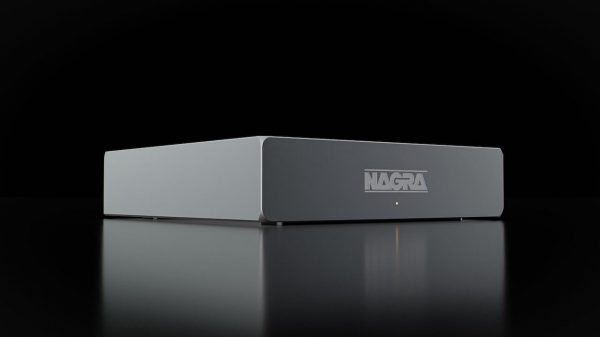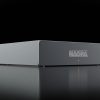Review By Clive Meakins

Lindemann is very well versed with digital technology and Class D amplifiers. For some people, they’ve been “flying under the radar” with their phono stage. The Lindemann Limetree Phono II is the successor to the well-regarded Limetree Phono and our review subject this month. With so much competition below $1,000 for audiophile-grade phono preamps, the Lindemann needs to be more than just good.
Being very candid; my initial reaction to the suggestion to review the Phono II was, “another relatively affordable Phono stage – I really hope it stands out from the crowd”. What I will say at this point is that I’m very pleased that I accepted the challenge. A phono stage can make or break a vinyl playback system — it needs to match the cartridge electrically plus be a good match in terms of tonal balance.
It’s not hard to put together a couple of OpAmps with an RIAA correction network in-between and voila, you have a phono stage; but that’s not to say it’ll be a good one that makes your specific system shine. I’ve already hinted that auditioning the Lindemann Limetree Phono II was a good use of my time so rest assured that if you are looking for a phono stage at around €600, finding out more about the Phono II will be very worthwhile.
The Lindemann Limetree range covers the Bridge, Network, Headphone, and Phono II; there are also the bigger Lindemann Musicbook siblings – the Source and Power 500 / 1000. I initially became familiar with Lindemann when I purchased their excellent Limetree Bridge which is a streamer with S/PDIF outputs for your DAC.
The Limetree Network adds an internal DAC to the Bridge hardware, all in the standard Limetree case. The Limetree Headphone…I’m sure you can work out that this is a headphone amplifier.

The range originally included the Limetree Phono which is now superseded by the Lindemann Limetree Phono II. Why Limetree? I suspect the naming was chosen because the lime tree (or linden tree) across several cultures is a sacred tree that was believed to help unearth the truth.
As with the other Limetree models, the Phono II comes in the diminutive Limetree aluminum case which features a Limetree leaf inscribed on the top. In addition, there is a large plug-top SMPS power supply which reassuringly is sourced from the top-quality Mean Well brand.
The Phono II has separate inputs optimized for MM and MC cartridges; gain is set at 40 dB and 66 dB respectively. The MM input has a 47kOhm / 150pF loading and the MC input can be varied in steps from 50R to 400R.

Looking at the all-important internals – the layout of the circuit board has been very carefully optimized; surface mount devices (SMDs) are utilized thereby keeping the copper runs very short. The SMDs themselves are said to be very high specification and high tolerance types. The circuit comprises two stages with J-FET OpAmps at the heart of the design.
I note that passive RIAA equalization is used; this is generally thought of as being a very good design approach. On the outside, there are individual inputs for moving coil and moving magnet cartridges, selection is via the power toggle switch, you hold it in the upper position for three seconds to switch mode between MC and MM.
Those running moving coil cartridges will be pleased to find easily assessable DIP switches; they can be configured in six combinations allowing you to achieve an optimal loading for your cartridge. With gain for MC carts set to 66 dB, it is high enough to run many of the lower output (i.e. 0.25mV) MCs as well as matching the many 0.5mV MCs. Gain for MM is 40 dB, this for me was a smart choice as it should be fine for the typical range of 2.5mV to 5mV.
The Mean Well SMPS power supply is of the plug-top variety, it is much more substantial than most others. It’s reputed to be high quality and medical grade. The great thing about a medical-grade plug is that such products ought to be well behaved in terms of electrical noise – not just from their output but also in terms of not feeding hash back into your mains.
The Mean Well brand has a very good reputation so I’m sure it’s a very good choice by Lindemann.
Testing With 4 Cartridges
I run two turntables; a Garrard 301 and a Trans-Fi Salvation which is a modern rim-drive with a linear tracking arm. Between these two decks I auditioned the Phono II using four very different cartridges:
- London Reference
- Audio-Technica AT-150MLX
- Transfiguration Spirit III (re-tipped)
- Ortofon 2M Mono SE
There were no connection drama or undue noise when I ran any of my cartridges with the Phono II; the moving coil input didn’t elicit any hum or hiss from my 102 dB/W/m sensitivity speakers which is somewhat rare. Quiet is definitely the word here.
Beginning With Salvation
The London Reference was the cartridge that spent the most time being played through the Phono II; it’s my favorite cartridge – so strong on clarity and dynamics – hence it gets played the most. It is in essence a modern Decca in a quality body with a Paratrace stylus profile.
Whilst it’s not a MM design, the London Reference outputs 5mV and so is destined to use the MM input. This cartridge normally lives on my Trans-Fi Salvation rim-drive deck.
Playing the first few albums via the Phono II I immediately felt at home with the sound; albeit the home had been freshly spruced up. What I heard sounded familiar but, in many aspects, it was a step better than I was used to.
Whether I was playing Pink Floyd, Cannonball Adderley, or Laura Marling I was treated to a very articulate midrange, clean extended treble, and a very good bass foundation. The midrange in particular was impressive with excellent vocal diction and expressive intonation.
This was very noticeably carried over to instruments such as guitar and saxophone. I also perceived greater depth with the Phono II in the system.
I’m always looking to see if there’s a way to improve a hi-fi component, my inquisitiveness soon got the better of me – I substituted a Super-Capacitor power supply for the Mean Well SMPS.
Super-Capacitor power supplies in my experience clean up extraneous noise and due to their instantaneous power delivery; they usually improve dynamics and bass reproduction.
How did the Phono II fare with the Super-Capacitor power supply? Not a single part of its sound changed. I was frankly surprised but in a good way.
Clearly, the Phono II has its internal power management very well implemented and the well-regarded Mean Well SMPS works as advertised.
Another aspect of technical performance is how a phono preamp reacts to noisy records; does it overload or clip when a click is encountered? All was fine, which is exactly what I’d expect from Lindemann who know what they are doing.
In passing, I want to mention that my auditioning included comparing some stubbornly noisy records vs duplicate records which had been successfully cleaned – naturally you’d hope that all my records would be clean and mostly they are.
I have a few very stubbornly noisy and belligerent records which I’d shoved away in disgust some time back. During this review I cleaned a few problematic records with a fluid that was new to me. The product is named E3 and it is by Analogue Alchemist from the UK. There are lots of magic fluids out there but this one managed to rid my problem records almost entirely of crackles.
E3 is an enzymatic formula with anti-static additives; its wetting agent is free from isopropyl alcohol. The enzymes in E3 did a great job of cleaning whatever was lurking in the problematic grooves. I have a 12″ single – Bowie & Jagger / Dancing In The Street; it’s full of verve and would have been great without the crackles and now it is.
Even with what I thought were clean records I discovered gains by recleaning with E3 using my trusty Loricraft PRC3 RCM. The fluid is fine for ultrasonic cleaners too. I’ve digressed a little, but I heartily recommend you give E3 a try.
Now that I was playing 12″ 45 rpm albums, I was wanted to understand how the Phono II helped me to differentiate the sound quality between 33 rpm and 45 rpm albums. Such a comparison is complicated by the issue of the mixes used for 33 and 45; often the 45 mix is “hotter”.
Either way, whilst 45s are usually thought to sound better, I don’t automatically find this to be the case. Over the years I’ve found a lack of sonic differentiation is because the cartridge or phono stage is holding the music back. With my London Reference on the Trans-Fi Salvation and Phono II in play, I could very clearly hear the benefits of the 12″ 45 rpm singles.
There was greater clarity and separation and importantly it was the dynamics, which delivered the knock-out punch. The sheer life and “lack of constriction” versus 33 rpm LPs was glorious.
I mustn’t overplay this; some of this effect will be down to a hotter mix of the 45s so I recognize that I’m not making an entirely fair comparison. However, the point is that I could immediately detect a significant difference and I put a lot of this down to the Phono II.
I continued my journey of ringing the changes to try out the Lindemann Limetree Phono II in varied settings. I put a good number of hours onto my moving magnet AT-150MLX which I mounted on the Trans-Fi Salvation.
The Audio-Technica has been superseded by a similar replacement so it’s still a very modern cartridge; it has a Boron cantilever and MicroLine stylus tip. This cartridge is very good; it produced 90% of what my London delivers, providing setup is precise.
Complaints about a thin sound with this cartridge can usually be traced to sub-optimal setup so I take great care to achieve proper alignment. Again, I was treated a clean sound with an especially articulate midrange. What the Phono II delivers is a sound that suggests accuracy rather than euphony; it melds well with digital sources – don’t take this to mean your records will sound identical to your digital sources.
What I mean is your record deck via a Phono II should exhibit a character that enables co-existence with a good digital source. Much of course depends on your deck, tonearm and cartridge too but the Phono II has a major part to play. These variables are the reason I used two turntables, two arms, and four cartridges to check out the Phono II. I didn’t want to be misled by my using a single configuration which might lead me to less useful conclusions.
Garrard 301 / Audiomods
I moved across to my Garrard 301 with the excellent Audiomods Series Six tonearm. I mounted my Transfiguration Spirit MK III moving coil (MC) cartridge and later the Ortofon 2M Mono SE. This was the first time I used the MC input on the Phono II. There were no surprises, the inaudible noise levels for the MM input did not noticeably change now that I was using the MC input with the Spirit III.
I experimented with the loading switches on the Phono II. I normally use 100 ohms with the Spirit. As the Phono II offers 50, 80, and 100 Ohms at the lower end of the six settings available, I tried 50 and 80 Ohms as well as 100. I settled on 80 Ohms for the best balance of bass and air. The effect of loading changes was not especially subtle, the changes were easy to discern. Again, the Phono II sonics were clean and transparent.
The Spirit III through the Phono II gave the liquid performance I’d hoped it would deliver; certainly the Phono II wasn’t getting in the way, it was letting the Spirit deliver its best. It was pleasingly clean, dynamic, and possessed that Transfiguration special fluidity with a super-refined treble.
Even the Spirit III bass was very solid, it’s not its strongest suit compared to the London Reference but here it was exceeding expectations; this was a great pairing. It’s such a shame that the genius Seiji Yoshioka has passed away and that Transfiguration is no more.
Finally, I got to mount the Ortofon 2M Mono SE on the Garrard 301 / Audiomods Series Six. I use this setup a lot with my 1950s and 1960s jazz records, I even use the mono cartridge with the pressings that are “fake” stereo – those mono recordings which have been processed into stereo – I almost invariably prefer to hear such recordings as 2-speaker mono. Again, the Phono II let me hear recordings as they are – without euphony – but without being so clean as to reduce the fun quotient.

In Conclusion
I listened via the Lindemann Phono II over several months. I unquestionably enjoyed the Lindemann Limetree Phono II. It suits a system that has multiple sources which are likely to include digital files and streaming. With a decent turntable and cartridge to pair with the Phono II, I would expect many to gravitate to playing records versus digital but let’s not open up that debate here.
The point is the Phono II offers a lot of value for the money; it allows music-lovers to achieve excellent results from their records with a sound that will co-exist extremely well with digital sources.
It’s clean but not too clean. Micro-dynamics are very good. Bass is very solid and suitably powerful. Treble is delicate, clear, and extended. The midrange is so very expressive for vocals and instruments; intonation is very well done. Soundstaging is broad and deep – the depth of the front soundstage is especially noteworthy.
The differentiation I perceived between 33 rpm LPs and 12″ 45 rpm records demonstrated to me the high level of fidelity available from the Phono II. The Lindemann Limetree Phono II lives up to its Limetree heritage – the linden tree is indeed helping to unearth the truth. At around €600, it’s impossible for me to find anything to complain about and lots to enjoy.
| Tonality | ★★★★★★★★★★ |
| Sub–bass (10Hz – 60Hz) | ★★★★★★★★★★ |
| Mid–bass (80Hz – 200Hz) | ★★★★★★★★★★ |
| Midrange (200Hz – 3,000Hz) | ★★★★★★★★★★ |
| High Frequencies (3,000Hz On Up) | ★★★★★★★★★★ |
| Attack | ★★★★★★★★★★ |
| Decay | ★★★★★★★★★★ |
| Inner Resolution | ★★★★★★★★★★ |
| Soundscape Width Front | ★★★★★★★★★★ |
| Soundscape Width Rear | ★★★★★★★★★★ |
| Soundscape Depth | ★★★★★★★★★★ |
| Soundscape Extension Into Room | ★★★★★★★★★★ |
| Imaging | ★★★★★★★★★★ |
| Fit And Finish | ★★★★★★★★★★ |
| Self Noise | ★★★★★★★★★★ |
| Value For The Money | ★★★★★★★★★★ |
Specifications
Type: Moving magnet (MM) and moving coil (MC) phono stage
Gain MM: 40 dB
Gain MC: 66 dB
Equalization: RIAA characteristic, overall deviation + 0 dB, – 0.5 dB
THD: < 0.001 % (at 0.5 V output)
S/N MM: > 82 dBV (A-weighted, 600 ohms termination, referred to 1 V output voltage)
S/N MC: > 72 dBV (A-weighted, 10 ohms termination, referred to 1 V output voltage)
Dimensions 4.2″ x 1.6″ x 5.1″ (WxHxD)
Weight: 10.4 ounces
Price: €595
Company Information
Lindemann Audiotechnik GmbH
Am Anger 4
D-82237 Wörthsee
Germany
E-mail: info@lindemann-audio.de
Website: www.Lindemann-Audio.de


































